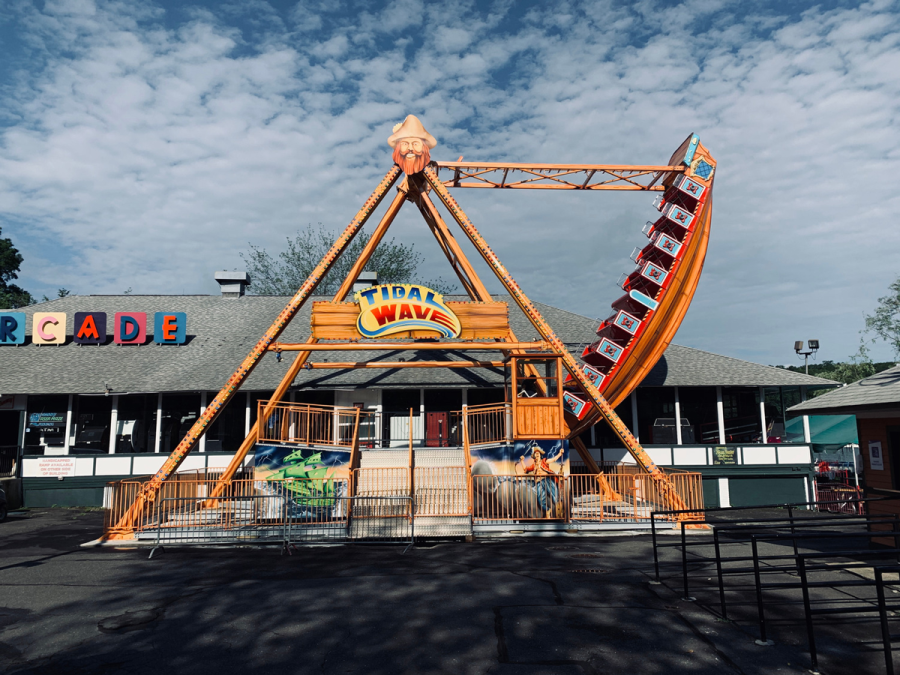5 Things Not Going Away Post-Pandemic

In 2020, the COVID-19 pandemic presented the attractions industry with the greatest challenge it has faced since the 1940s, as nearly every attraction in the world was forced to close last spring.
As several reopened through 2020, they were forced to adapt and innovate in the face of a “new normal.” As the global rollout of vaccines provide much needed hope, attractions worldwide are anxious to return to full operations. While temperature checks, mask requirements, and socially distanced queues may eventually be retired, other changes are here to stay.
Capacity Management
While government restrictions will force many attractions to limit capacity as the 2021 season begins, some tools employed by the industry will remain long after those restrictions are lifted. Andreas Andersen, president and CEO of Sweden’s Liseberg Group has seen a decreasing appetite for queuing for years, a trend that only accelerated during the pandemic. He foresees more attractions moving toward differentiated—and eventually dynamic—pricing to distribute guest crowds better and control capacity. He also projects that digital queuing solutions will become an even bigger part of the guest experience. But digital queuing is not right for every facility. Holiday World & Splashin’ Safari in Santa Claus, Indiana, initially thought it would continue to use the virtual queuing system employed in 2020 as part of its set of complimentary guest amenities but decided to drop the system due to mixed guest acceptance.
Cashless Operations
Many attractions had already made the move to cashless operations in the years leading up to the pandemic, but operating in the era of the coronavirus has accelerated the trend, spurring even greater consumer acceptance across all types of businesses. While Amanda Thompson, OBE, managing director of Blackpool Pleasure Beach Ltd. in the United Kingdom and 2021 IAAPA Chairman, mentions that cashless transactions are safer for both team members and guests, the facility is challenged by finding the best way for its younger guests to access funds. “Not all children have phones,” adding that the importance of mobile technology might prompt many attractions to open phone stores.
Touchless Concessions
As attractions sought to minimize guest contact, food and beverage has become a prime area to utilize technology to make the process more efficient. Mobile food ordering apps are now popular among larger attractions operators and that is expected to spread throughout the industry. In addition to minimizing contact, mobile ordering apps reduce wait times, resulting in greater guest satisfaction. Dennis L. Speigel, founder and CEO of International Theme Park Services Inc., observes that these apps also drive impulse purchases increasing per caps. Another impact has been the resurrection of scannable QR codes—which had virtually disappeared—as a means of conveying events, displaying park maps, and sharing menu information without the need to print paper copies.
Learn more on the impact of QR codes at attractions, and to create your own, in "Cracking the Code."
Cleanliness Is Even More Important

Cleanliness is a core value of attractions, but the advent of COVID-19 only made it more important. As the pandemic becomes a memory, guests will still prioritize cleanliness in the facilities they visit.
“We anticipate being more attuned to keeping touch points on rides and attractions disinfected for some time to come and generally keeping our housekeeping team on top of all aspects of our operation where any concern might arise,” says Eric Anderson, president of Quassy Amusement & Waterpark in Connecticut.
Rick Knoebel of Pennsylvania’s Knoebels Amusement Resort says hand sanitizer dispensers are going to be a welcome sight for the foreseeable future. Although he cautions that “the days of stamping hands may be numbered. Stamps quickly wash off with an alcohol-based sanitizer.”
New Ways to Generate Revenue
Over the past year, government restrictions have prevented many facilities from opening in their traditional manner and led them to find creative new ways to generate revenue. Knott’s Berry Farm in California launched a successful food festival, although rides were not permitted to operate. Six Flags Great Adventure in New Jersey revived its drive-thru animal safari, and Virginia’s Busch Gardens Williamsburg developed a premium-priced, limited-capacity “Taste of Busch Gardens” event.
Other parks such as Pennsylvania’s Sesame Place and Maryland’s Six Flags America have extended their operating calendars, moving closer to year-round operation. Knoebels Amusement Resort launched “Joy Through the Grove,” a drive-thru Christmas light experience. Cars lined up for hours to experience the event, and the park now feels it is here to stay. Quassy had traditionally avoided post-season events, but this fall, it will launch a laser light drive-in show that will utilize its parking lot like a drive-in theatre experience.
As the world slowly puts the pandemic in the rearview mirror, many of the changes that were so much a part of day-to-day life will be happily forgotten, but others have improved operations and will remain for years to come.
Learn more on how attractions found unique ways to open and extend their seasons with "California Theme Parks Get Creative."
